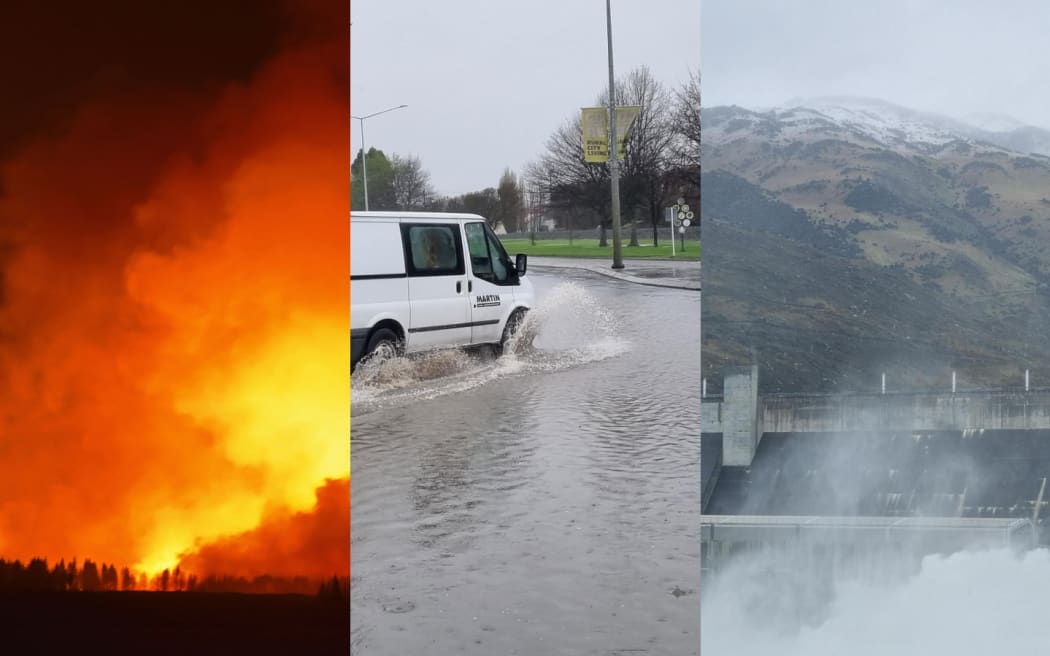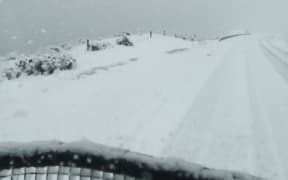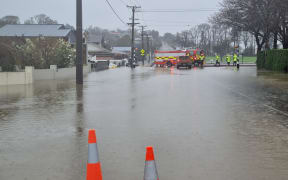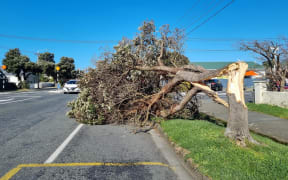
Photo: Supplied / Chris Rudge, RNZ / Tess Brunton
Visitors to Aotearoa often marvel how you can be on the beach in the morning and hit the ski slopes in the afternoon.
Kiwis are used to erratic weather - four seasons in one day is our anthem. But this week's extremes of fire, floods, snow and record temperatures - all in the space of a few days - has even got scientists questioning: what's up with the freaky weather?
Queenstown and Southland are in states of emergency due to flooding on Thursday night. Both locations had had over a month's worth of rain in a day - with Queenstown's wettest day in 24 years, NIWA said.
At the same time, Canterbury was battling a huge scrub fire. Next day - it's bracing for ice and snow.
Further up north, Hawke's Bay thinks it's summer already, enjoying record temperatures for spring. Yesterday it soared to 29.6˚C in Wairoa, the highest ever September temperature recorded in the North Island.
Simultaneous climate extremes are growing more common around the world due to a recent report on climate change, linked to global warming from ever-increasing greenhouse gas emissions.
But NIWA says it's problematic and even unhelpful to link climate change to single weather events, and they look at the current climate drivers in the atmosphere and oceans to analyse the weather's behaviour.
This week's current extremes - while they seem unusual - are being caused by a combination of natural climate drivers, NIWA meteorologist and forecaster Tristan Meyers said.
"It's all part of the roller coaster weather we call spring."
New Zealand's main climate driver at the moment and for the upcoming months is El Niño, which Stuff understands will be formally declared by NIWA next week.
"Typically El Niño causes stronger or more frequent winds from the west, which can encourage dryness in eastern areas and more rain in the west, Meyers said.
"But the specific cause of this week's opposing weather extremes of fire one day, snow the next, are two very different air masses that are currently sweeping through New Zealand."
"We have a strong front that's hit the South Island, and with it, it's brought very, very cold air up from Antarctica. But ahead of that front, we've had hot air coming from Australia.
"So we have two very different air masses - one from the Southern Ocean and one from the hot deserts of Australia. The hot air causes high temperatures - we've seen record ones this week in the South Island too, in the high 20s. The dry heat can spark fires, but then boom, straight after, we have a cold air mass flushing out that heat, bringing moisture."
The collision of two different air masses is causing mixed weather.
"When you have air that's really different, the atmosphere doesn't like it, it tries to mix it out, and then you can get extreme weather and that's what we are seeing.
"That's exactly what hit the South Island yesterday, an atmospheric river caused by these two air masses colliding into each other."
This story was originally published by Stuff.





